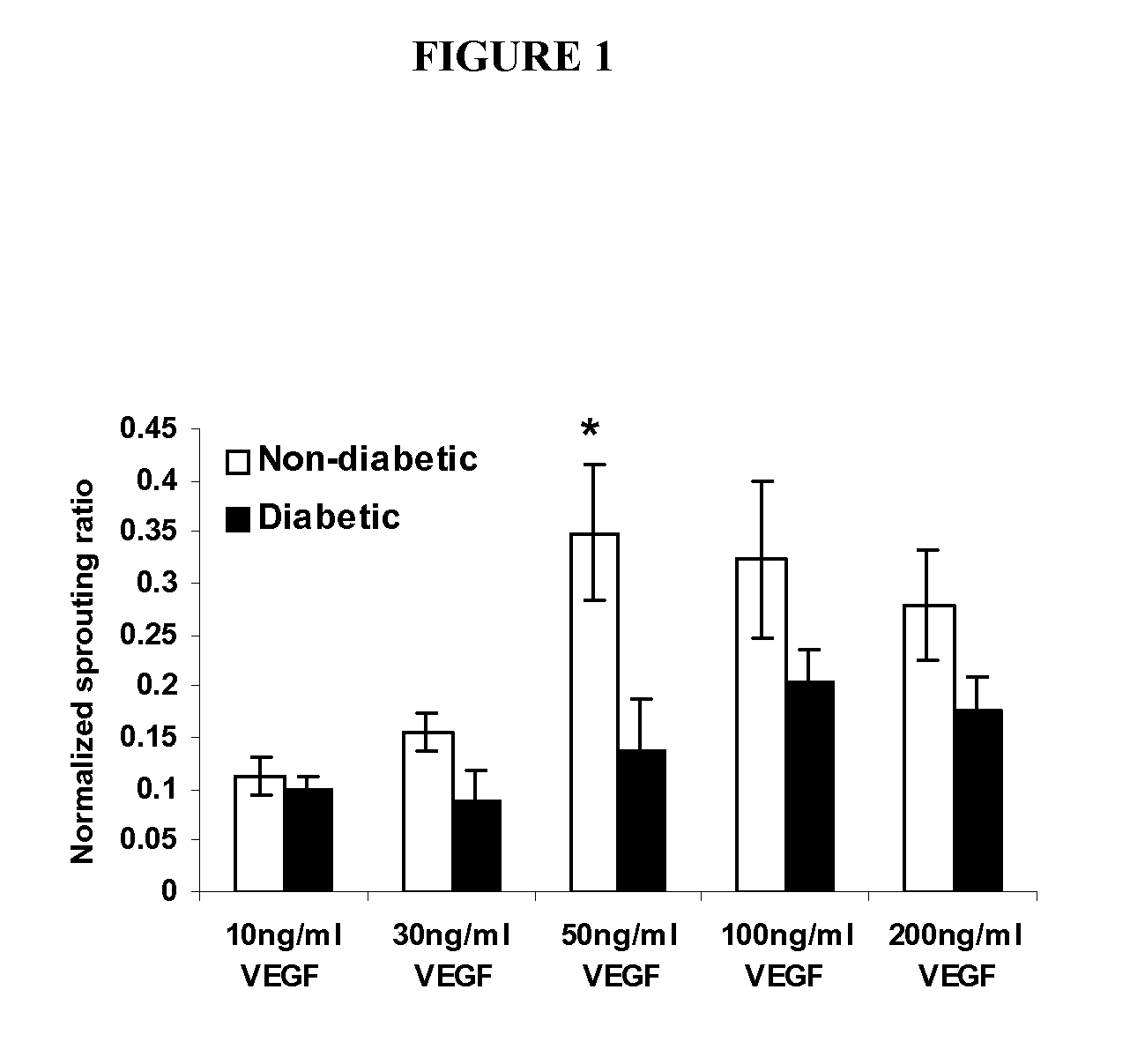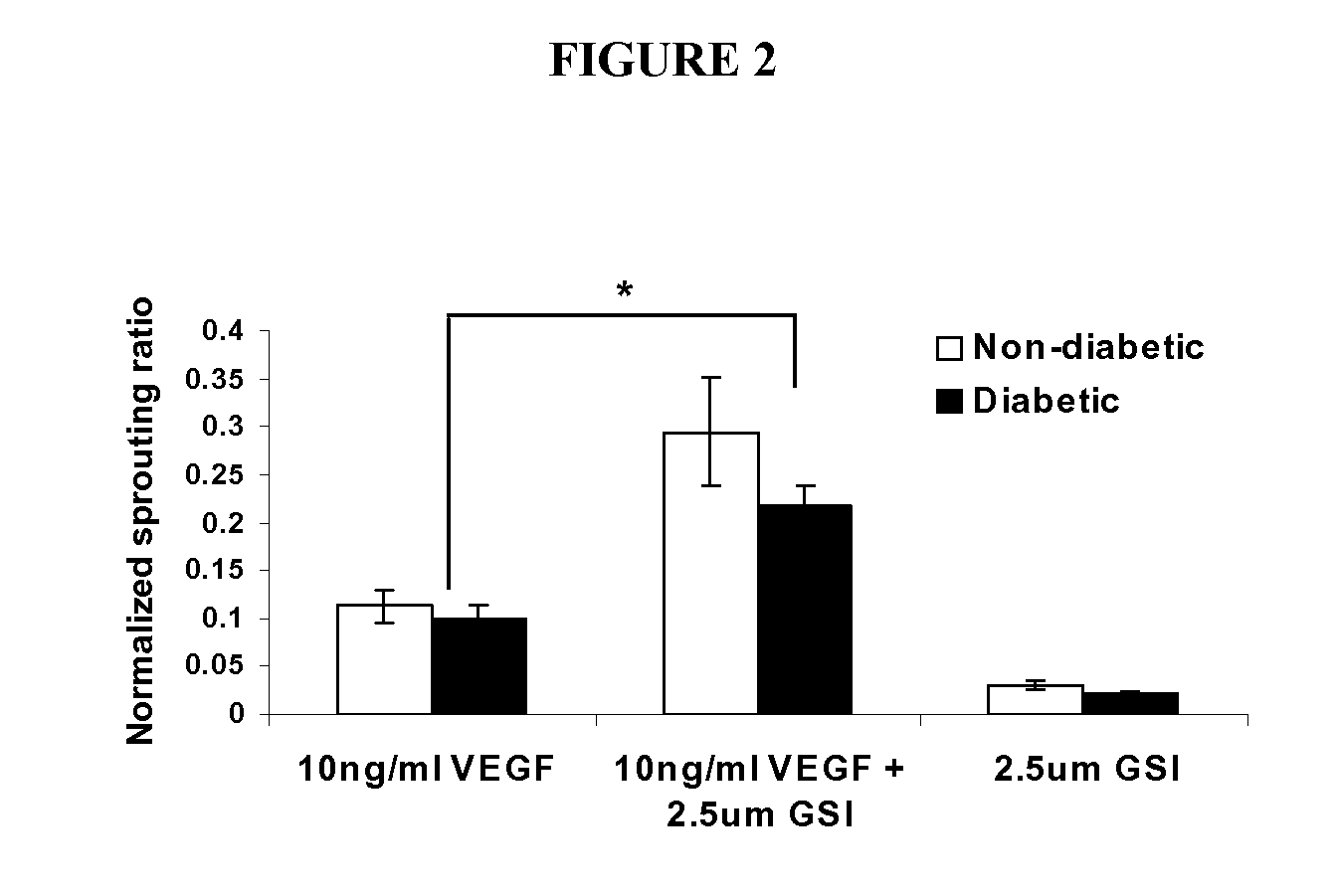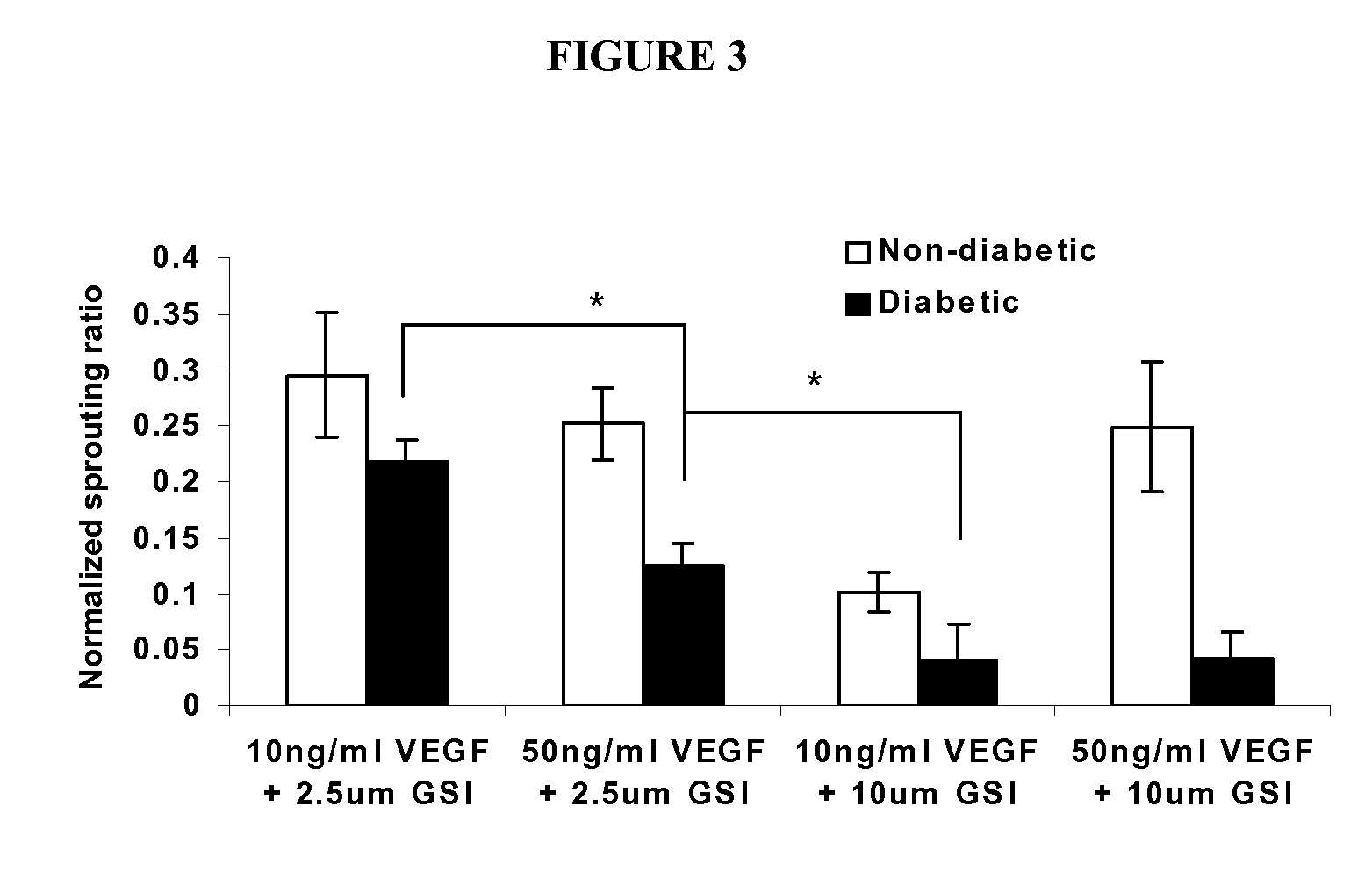Controlled release of growth factors and signaling molecules for promoting angiogenesis
a technology of growth factor and signaling molecule, which is applied in the field of cardiac disease, tissue repair, and preventative medicine, can solve the problems of causing deleterious side effects, inability to present continuous, sustained, and distinct presentation of pro-angiogenic factors and signaling molecules,
- Summary
- Abstract
- Description
- Claims
- Application Information
AI Technical Summary
Benefits of technology
Problems solved by technology
Method used
Image
Examples
example 1
In vitro Model to Test the Significance of a Controlled Local Concentration of VEGF
[0150]Endothelial cells isolated from diabetics are shown to have a reduced response to VEGF as compared to age-matched non-diabetics (FIG. 1, *P<0.05), as reflected in their capability of forming sprouts, the first step in angiogenesis. In addition, there is an optimal VEGF concentration to induce most sprouts. This suggests the need of a controlled concentration of growth factors in the local area to reach the best therapeutic effect.
example 2
In vitro Model to Test the Significance of a Combination of DAPT and VEGF
[0151]Endothelial cells isolated from diabetics produce more sprouts in the presence of a combination of both gamma-secretase inhibitors with VEGF. (FIG. 2, *P<0.05) than with either of them alone, which implies the need of a combination of both growth factor and DAPT.
example 3
In vitro Model Establishing the Significance of a Distinct Presentation of VEGF and DAPT
[0152]This examples illustrates the concept that while the combination of VEGF and DAPT is superior to either single factor alone, the optimal concentration for each individual compound does not coincide. As shown in FIG. 3 (*P<0.05), the concentration of VEGF that gives the most sprouts if used alone (50 ng / ml) is less superior to a lower concentration (10 ng / ml) when in combined use with DAPT (2.5 μM). Moreover, increasing both the concentration of VEGF (50 ng / ml) and DAPT (10 μM) actually reduces the number of sprouts. This indicates that the presentation of VEGF and DAPT may need to be separately controlled to achieve an optimal effect.
PUM
| Property | Measurement | Unit |
|---|---|---|
| time period | aaaaa | aaaaa |
| time period | aaaaa | aaaaa |
| volume | aaaaa | aaaaa |
Abstract
Description
Claims
Application Information
 Login to View More
Login to View More - R&D
- Intellectual Property
- Life Sciences
- Materials
- Tech Scout
- Unparalleled Data Quality
- Higher Quality Content
- 60% Fewer Hallucinations
Browse by: Latest US Patents, China's latest patents, Technical Efficacy Thesaurus, Application Domain, Technology Topic, Popular Technical Reports.
© 2025 PatSnap. All rights reserved.Legal|Privacy policy|Modern Slavery Act Transparency Statement|Sitemap|About US| Contact US: help@patsnap.com



